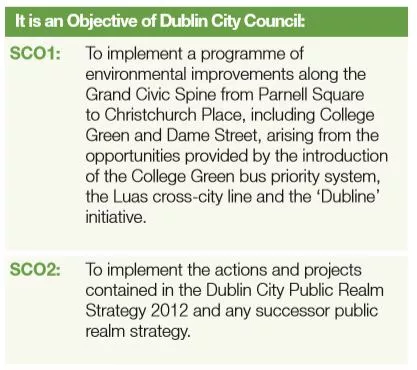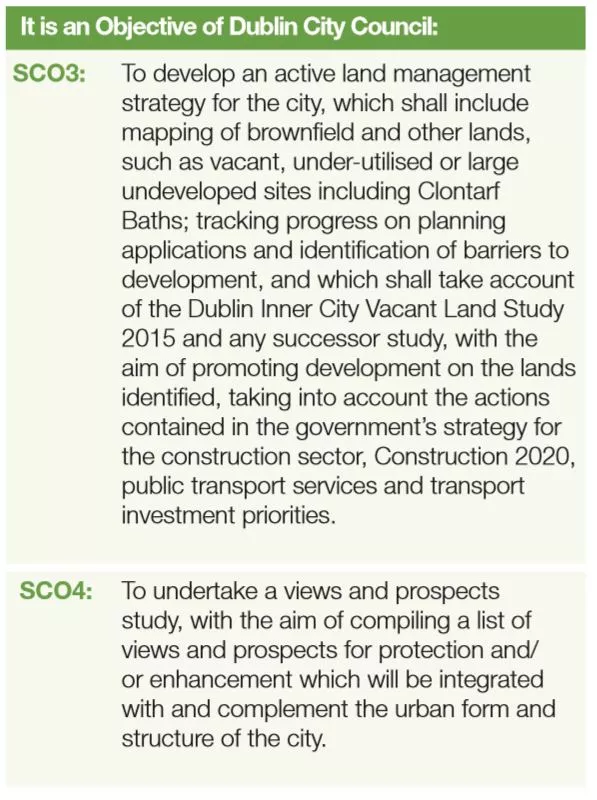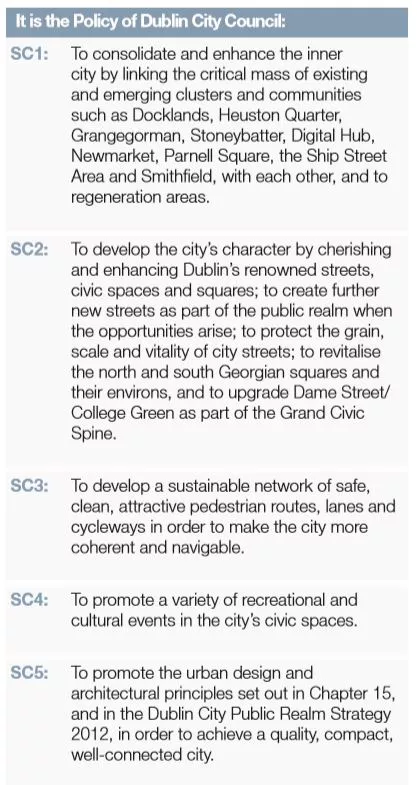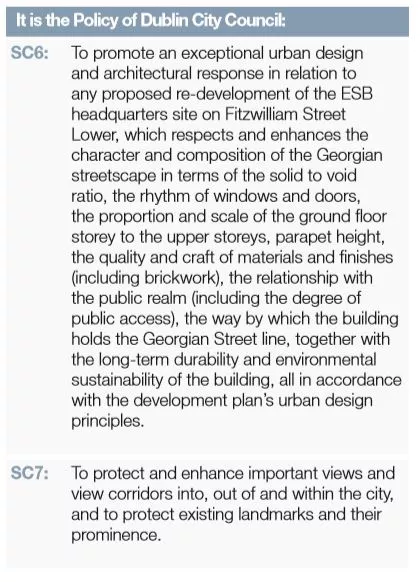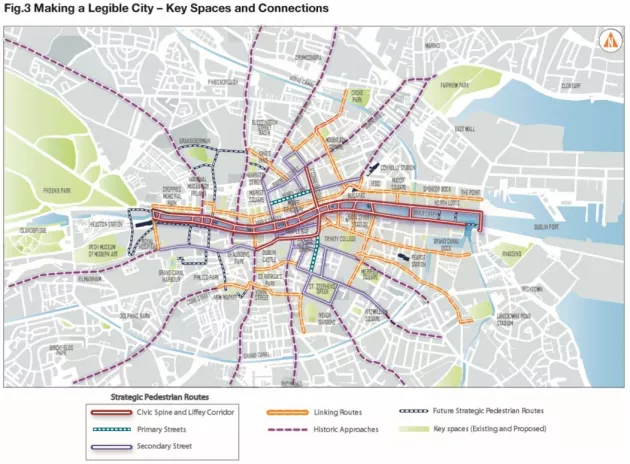4.5.1.1 Approach to the Inner City
4.5.1.1 Approach to the Inner City
The rapid expansion of the city has led to isolated clusters of development. It is anticipated that the implementation of the Dublin City Public Realm Strategy and the proposed cycle network will help address this challenge, thereby making both recently developed and established areas more coherent and connected.
While a tremendous amount of urban regeneration has lifted many areas of the new extended inner city, there remains a great sense of unevenness, with pockets of excellence contrasting with areas still in need of rejuvenation, including the social housing regeneration areas.
Large tracts of brownfield sites remain in the inner city, and whilst not excessive by international standards, they significantly detract from its character and coherence. The inner city vacant lands study has identified approximately 60 hectares of brownfield or dilapidated lands within the canal ring.
While such lands, both individually and cumulatively, adversely impact on their immediate environs and the wider inner city environment, the appropriate redevelopment of such lands represents an opportunity to significantly enhance both the built and social environment of the inner city, especially those areas most in need of regeneration, by bringing housing and employment to them.
Of particular significance is the implementation of the Grangegorman SDZ, whereby the relocation of Dublin Institute of Technology to this area and the provision of other services and facilities connect directly with its surrounding area and will anchor the regeneration of this part of the north inner city. The delivery of the Grangegorman SDZ complements the north–south links with the evolving Digital Hub area in the Liberties.
A positive feature of the identity of the inner city is the strength of the sense of place which exists in different clusters. The development plan seeks to strengthen place-making in the city in order to consolidate and enhance the city centre, at the heart of the city region. The traditional radial market streets are an important part of the fabric of the city, and the living city initiative will assist in the renovation and animation of these ‘windows’ to the city by incentivising residential occupation of vacant upper floors.
However, the various clusters must also be interconnected. The Dublin City Public Realm Strategy sets out the key actions and projects to deliver a high-quality public realm in and between key public spaces, both in established and emerging clusters.
The key elements of this public space network are:
- The River Liffey quays, including the campshires and the Liffey boardwalk
- The grand civic spine from Parnell Square to Christchurch, via O’Connell Street, College Green and Dame Street
- Extending this network to adjacent regeneration areas, for example, the Liberties, Grangegorman, the Docklands
